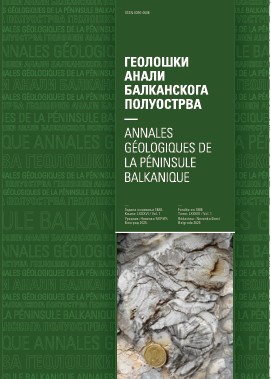Correlation of metabasic rocks from metamorphic soles of the Dinaridic and the Western Vardar zone ophiolites (Serbia): three contrasting pressure-temperature-time paths
Abstract
The field, petrological-mineralogical, geochemical and geochronological data of the metamorphic sole rocks recorded beneath the Fruška Gora, Povlen (Tejići), Stolovi and Banjska ophiolites in the Western Vardar Zone (WVZ) and beneath the Zlatibor, Bistrica, Sjenički Ozren and Brezovica ophiolites in the Dinaridic ophiolite belt (DOB) in Serbia are compared. The focus has been made on metabasic rocks formed in contact with the oceanic crust members: cumulate gabbro and basalts of SSZ-type with E-MORB and OIB-signature and more evolved tholeiitic basalts of MOR-affinity. Amphibole, the major phase formed from the mafic sole components, depending on pressure-temperature conditions exhibits compositional variations. According to mineral assemblages, estimated P-T conditions and ages, the potential P-T paths are given: high pressure - low temperature blueschist facies assemblage (7-9 kbar and ~400°C and <300-350°C and 4-8 kbar), recorded only in the metamorphic sole at the Fruška Gora (WVZ); high pressure - high temperature amphibolite to granulite facies (8-10 kbar and >700-850°C), recorded in both domains, the WVZ (Banjska) and the DOB (Bistrica, Sjenički Ozren, Brezovica) and medium pressure - medium temperature amphibolite facies assemblages (~3.5-7 kbar and >350-650°C) recognized in the WZV (Tejići, Devovići) and the DOB (Zlatibor). The peak metamorphic conditions point to depths of the oceanic lithosphere detachment and its initial cooling at 10-30 km, but the ages and tectonic setting of ophiolites remain poorly constrained. The summarized data may be used as an important key in geodynamic evolution of the Mesozoic Tethyan ophiolites.
Copyright (c) 2022 Geološki anali Balkanskoga poluostrva

This work is licensed under a Creative Commons Attribution 4.0 International License.










